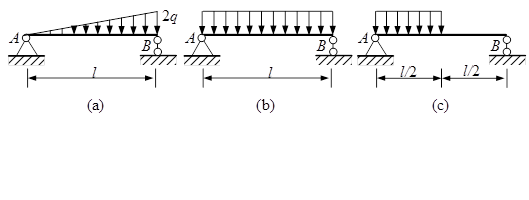 题目内容
(请给出正确答案)
题目内容
(请给出正确答案)
There are several ways in which Americans 【B1】 customs are different from those in other p
【B1】
A.dinning
B.dine
C.diner
D.dinner
 题目内容
(请给出正确答案)
题目内容
(请给出正确答案)
【B1】
A.dinning
B.dine
C.diner
D.dinner
 更多“There are several ways in whic…”相关的问题
更多“There are several ways in whic…”相关的问题
听力原文:M: Did you see that TV special on Norman Rockwell last night?
W: Yes, I did. It was really good, wasn't it?
M: It sure was. I thought it was really interesting how he developed the paintings in states starting with photographs.
W: Yes, I did, too. It never occurred to me that he would have actually employed models.
M: I know. But it does make sense to use photographs of real people, to solve as many of the composition problems as possible before starting to paint.
W: True. Anyway, you knew what I like most about his work?
M: What?
W: Well, when you look at one of the magazine coves, which magazine was it?
M: The Saturday Evening Post.
W: Yes, you can just tell what the people are thinking and feeling. The picture really tells a story.
M: You're right. I like that, too. And to think that he created several hundred of those.
W: Amazing. Of course; that was over a period of almost sixty years, but still...
M: I'd like to see them when that exhibit comes to Miami.
W: What exhibit?
M: The one they mentioned after the special.
W: Oh. I must have turned it off before the announcement. I'd like to see it, too, Let's go.
M: OK.
W: I'm sure we'll appreciate it very much.
(23)
A.Last night.
B.Tonight.
C.Yesterday afternoon.
D.This morning.
听力原文:M: Did you see that TV special on Norman Rockwell last night?
W: Yes, I did. It was really good, wasn't it?
M: It sure was. I thought it was really interesting how he developed the paintings in states starting with photographs.
W: Yes, I did, too. It never occurred to me that he would have actually employed models. I just assumed that he invented all those wonderful characters.
M: I know. But it does make sense to use photographs of real people, to solve as many of the composition problems as possible before starting to paint.
W: True. Anyway, you know what I like most about his work?
M: What?
W: Well, when you look at one of the magazine covers, which magazine was it?
M: The Saturday Evening Post.
W: Yes, you can just tell what the people are thinking and feeling. The picture really tells a story.
M: You're right. I like that, too. And to think that he created several hundred of those.
W: Amazing. Of course, that was over a period of almost sixty years, but still...
M: I'd like to see them when that exhibit comes to Miami.
W: What exhibit?
M: The one they mentioned after the special.
W: Oh. I must have turned it off before the announcement. I'd like to see it, too. let's go
(20)
A.The use of photographs in painting.
B.The TV program about Norman Rockwell.
C.The Saturday Evening Post magazine.
D.Exhibits of art on magazine covers.
听力原文:M: Did you see that TV special on Norman Rockwell last night?
W: Yes, I did. It was really good, wasn't it?
M: It sure was. I thought it was really interesting how he developed the paintings in states starting with photographs.
W: Yes, I did, too. It never occurred to me that he would have actually employed models.
M: I know. But it does make sense to use photographs of re- al people, to solve as many of the composition problems as possible before starting to paint.
W: True. Anyway, you know what I like most about his work?
M: What?
W: Well, when you look at one of the magazine covers, which magazine was it?
M: The Saturday Evening Post.
W: Yes, you can just tell what the people are thinking and feeling. The picture really tells a story.
M: You're right. I like that, too. And to think that he created several hundred of those.
W: Amazing. Of course, that was over a period of almost sixty years, but still...
M: I'd like to see them when that exhibit comes to Miami.
W: What exhibit?
M: The one they mentioned after the special.
W: Oh. I must have turned it off before the announcement. I'd like to see it, too. Let's go.
(20)
A.The use of photographs in painting.
B.The TV program about Norman Rockwell.
C.The Saturday Evening Post magazine.
D.Exhibits of art on magazine covers.

A.wa=wb=2wc
B.wa>wb=wc
C.wa>wb>wc
D.wa≠wb=2wc


为了保护您的账号安全,请在“简答题”公众号进行验证,点击“官网服务”-“账号验证”后输入验证码“”完成验证,验证成功后方可继续查看答案!

 微信搜一搜
微信搜一搜
 简答题
简答题



 微信搜一搜
微信搜一搜
 简答题
简答题